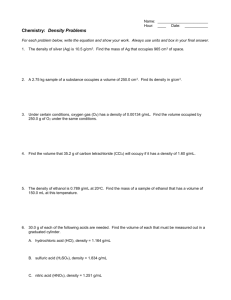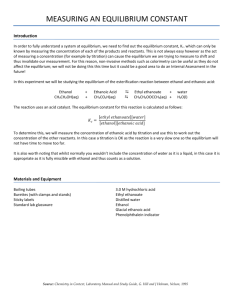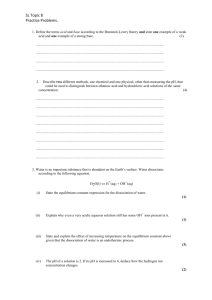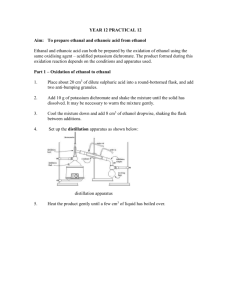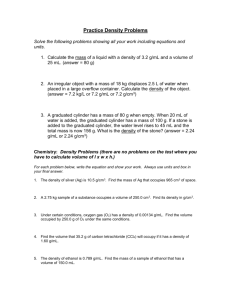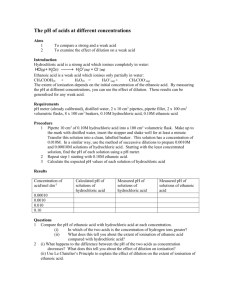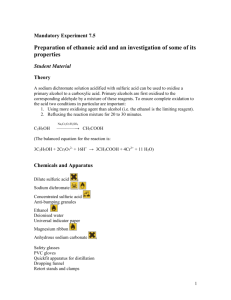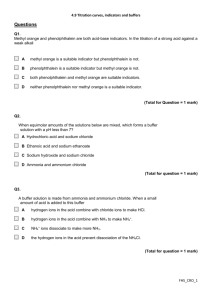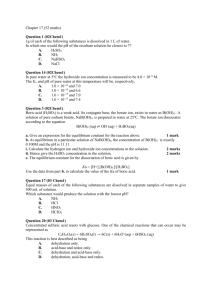Finding an equilibrium constant for esterification
advertisement
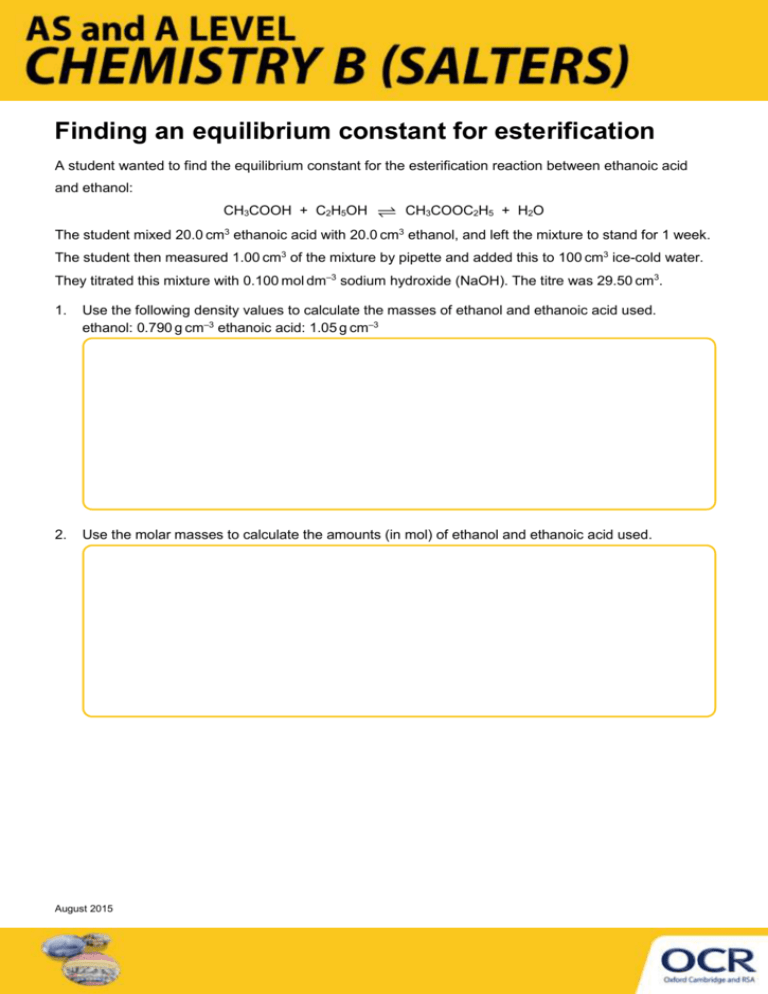
Finding an equilibrium constant for esterification A student wanted to find the equilibrium constant for the esterification reaction between ethanoic acid and ethanol: CH3COOH + C2H5OH CH3COOC2H5 + H2O The student mixed 20.0 cm3 ethanoic acid with 20.0 cm3 ethanol, and left the mixture to stand for 1 week. The student then measured 1.00 cm3 of the mixture by pipette and added this to 100 cm3 ice-cold water. They titrated this mixture with 0.100 mol dm–3 sodium hydroxide (NaOH). The titre was 29.50 cm3. 1. Use the following density values to calculate the masses of ethanol and ethanoic acid used. ethanol: 0.790 g cm–3 ethanoic acid: 1.05 g cm–3 2. Use the molar masses to calculate the amounts (in mol) of ethanol and ethanoic acid used. August 2015 3. Calculate the amount of sodium hydroxide in 29.50 cm3 of the 0.100 mol dm–3 solution. 4. Calculate the amount of ethanoic acid in the 1.00 cm3 sample of the equilibrium mixture. 5. Calculate the amount of ethanoic acid in the whole of the 40.0 cm3 equilibrium mixture. August 2015 6. Calculate the amount (in mol) of the original ethanoic acid that has been converted into the ester. 7. Calculate the amounts of the ester and of water present at equilibrium. 8. Calculate the amount of ethanol that remains at equilibrium. August 2015 9. Calculate the molar concentrations of each chemical at equilibrium. (There is 40.0 cm3 of the reaction mixture in total.) 10. Calculate the equilibrium constant with units. 11. Why was the mixture left for 1 week before the titration? August 2015 12. Why was the 1.00 cm3 measured by pipette? 13. Why was the sample of the equilibrium mixture added to 100 cm3 of cold water before titrating it? August 2015
